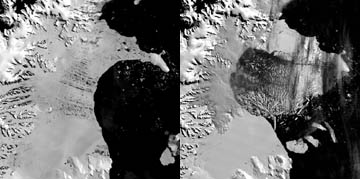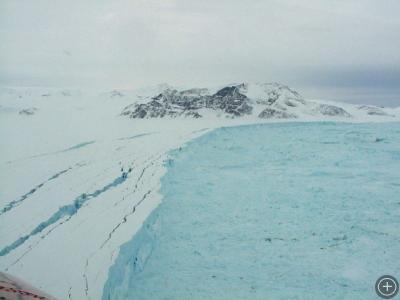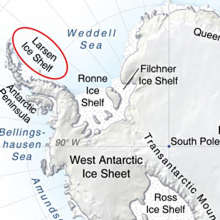
Studying how a polar marine ecosystem responds to an ice shelf collapse
What happens when a dark polar ecosystem is suddently flooded with light? Does it explode with life, as happens every spring in Antarctica when phytoplankton in the polar seas reproduce in huge numbers to take advantage of the return of sunlight?
An NSF-sponsored research cruise investigated this question when it traveled to the Wedell Sea off West Antarctica, the site of a huge ice-sheet collapse seven years ago. When the Larsen B ice shelf disintegrated in 2002, it exposed nearly a million square miles of seafloor that had been shaded by the overhanging ice sheet for 10,000 years. Life in the undisturbed cold and dark before the collapse was supported by bacteria that thrive in the deep sea, subsisting on chemicals seeping from ocean vents rather than from photosynthesis.
The LARISSA (Larson Ice-Shelf Systems-Antarctica) project, which brings together an international team of scientists including lead ecosystem biologist Maria Vernet, traveled to this transformed seascape to investigate whether chemosynthetic organisms and ecosystems still dominate or whether they’ve been replaced in the food chain by light-loving phytopolankton from nearby polar sea communities. The research included examining the phytoplankton populations throughout the water column, analyzing sediment traps and characterizing the bottom community using remotely operated vehicles. Understanding how changes in ice sheets affect polar ecosystems will shed light on how life in arctic and antarctic ocean may respond to future loss of sea ice and ice shelves predicted under current climate change models.
Follow along as Maria and her team, doctoral candidate Mattias Cape and outreach coordinator Beth Simmons from Scripps Institution of Oceanography, will send dispatches from the research cruise in early 2010.













